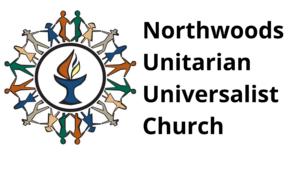What does the Board do if we drive decision-making closer to people who do the work?
The Board becomes a guiding force for Northwoods and shifts focus to strategic planning versus tactical firefighting. It has more time to plan long-term initiatives and share them with the Coordinating Circle, as the Coordinating Circle will also be expected to share ideas with the Board.
Example – Not Northwoods’ proposed structure.
Is the Board still elected? If so, why?
Yes. The Board is elected as the guiding “mission circle,” so it’s important to elect individuals who will excel at that work.
Who approves things?
Some things that “require Board approval” today will change. Examples of decisions that can be made at a lower level include how to spend a budget allocated to a circle,
What happens to our bylaws?
The structural descriptions of the committees changes in the new version of the Bylaws. Circles (former committees) are free to set up their own processes, covenant, meeting schedules, etc. and self-govern. Many sections of the Bylaws do not change as they are fundamental to church solvency.
What do “authority” and “responsibility” mean in sociocratic settings?
Sociocracy requires us to be accountable to each other, but also allows work to be done with less red tape. Perhaps the word “empowerment” replaces “authority” and “accountability” replaces “responsibility.” The Coordinating Circle may decide, for example, that the Membership Circle is empowered to set up a new mechanism for new member onboarding. The Membership Circle is then accountable to the Coordinating Circle to share what they’ve come up with, but they don’t need to seek permission from the Coordinating Circle.
Can this be used with the youth?
Yes. In fact, it could be a great way to share ownership in decision-making and introduce democratic process early on.
Is anyone in charge?
It depends what we mean by “in charge.” Sociocracy doesn’t favor a “the buck stops here” approach. At a meeting or when making decisions, it’s helpful to have a facilitator, but action items that come out of a meeting should be shared and the facilitator can ask who will own each item. In a church setting, the Board still exists to set general direction and strategic priorities, so in one sense, the Board is still “in charge.” But, ownership of all church process (and success) is shared among more people.
How do we protect from stepping on each other’s feet when no one person is in charge?
When we agree to own an action to move a circle forward, complete the action or ask for help. Only take on what you can do. That may be taking notes at a meeting or being the delegate to another circle. All of us have unique strengths and things we can improve on, and there is room for everyone to take on ownership.

